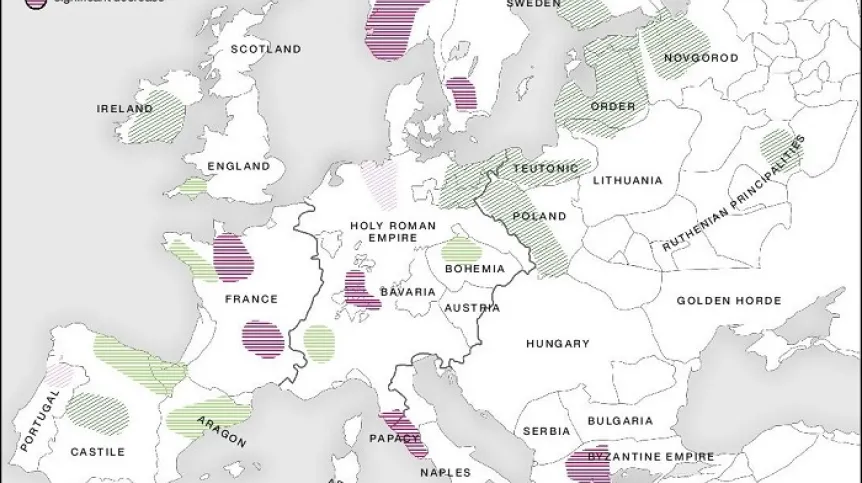
While the Black Death did affect the population in many parts of Europe, there were areas where its impact was negligible or none at all, scientists including Polish researchers report in Nature Ecology and Evolution. These came to such these conclusions by studying... fossil spores and plant pollen.
The Black Death that spread in Europe, Western Asia and North Africa in 1347-1352, is considered the worst pandemic in history. It was the first wave of the second plague pandemic. Historians have so far estimated that it killed 30 to 60 percent of the European population, and on this basis they attributed transformation of religious and political structures, and even acceleration of serious cultural and economic changes, such as the Renaissance or capitalism, to the Black Death. Meanwhile, although research on the ancient DNA allowed to identify the bacterium Yersinia pestis as a factor causing the plague, and even trace its evolution over millennia, the data on demographic consequences of the plague are still not poorly researched, according to the press release sent to PAP by the universities involved in the research project: the Adam Mickiewicz University in Poznań and the University of Bialystok.
New study shows that mortality caused by the Black Death in Europe in the mid-16th century was not so common and severe as previously thought, the scientists write in Nature Ecology and Evolution.
The publication is the result of the work of an international team of researchers, which included scientists from many European centres, including Poland: the University of Bialystok, the Adam Mickiewicz University in Poznań, the W. Szafer Institute of Botany PAS in Kraków, the Institute of Geography and Spatial Development. the Stanisław Leszczycki Institute of Geography and Spatial Organization PAS, the Institute of Geological Sciences PAS, the University of Gdańsk, the Nicolaus Copernicus University in Toruń and the Jagiellonian University in Kraków.
The researchers analysed pollen data on landscape change from 261 lakes and wetlands located across 19 modern-day European countries. This allowed them to determine how the landscapes and agricultural activity changed between 1250 and 1450, approx. 100 years before and after the pandemic. The analysis confirms that the Black Death had a devastating impact in some regions, while it had negligible or no impact in others, the authors of the study report.
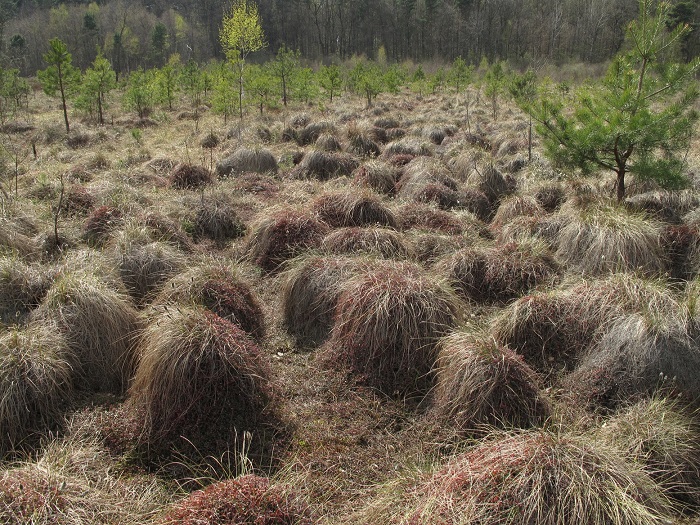
Linje peat bog - a unique, high resolution archive of fires, hydrology, afforestation and deforestation related to human activity. This is one of the oldest known peat bogs constantly growing for 11,000 years. Credit: Mariusz Lamentowicz
'Palynology, the study of plant pollen and spores, is a good tool for discovering demographic effects of the Black Death. This is because the human impact on the landscape in the pre-industrial times, particularly agriculture and forest management subordinated to construction needs, were largely dependent on labour availability', emphasizes Dr. Adam Izdebski, head of the Palaeo-Science and History group at Max Planck Institute for the Science of History, quoted in the press release.
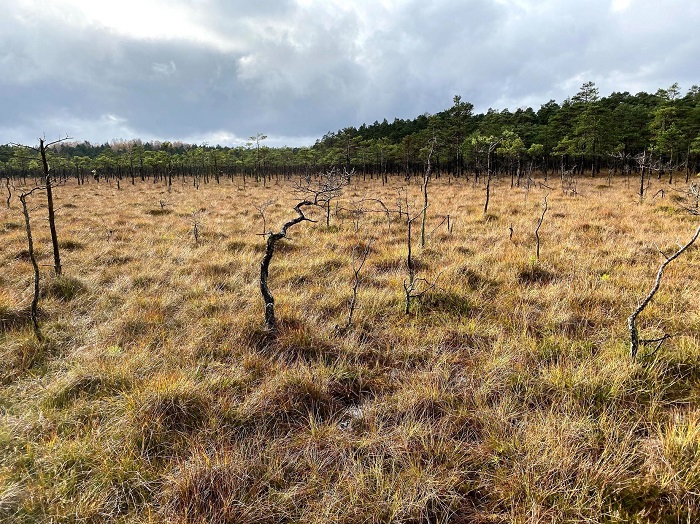
Kusowo marsh - one of the best-preserved high peat bogs in northern Poland. The object has a unique, high resolution record of fire frequencies and vegetation changes in the last millennium. Credit: Mariusz Lamentowicz
By applying a pioneering new approach, big data palaeoecology (BDP), the scientists have analysed 1634 pollen samples from sites all over Europe to check which plants grew in a given area, and determine whether agricultural activity during the pandemic in a given place was inhibited, whether its intensity decreased or increased, which would have to be associated with population fluctuations. They also searched for traces of rebirth of wild vegetation, which could suggest reduced human pressure on the landscape.
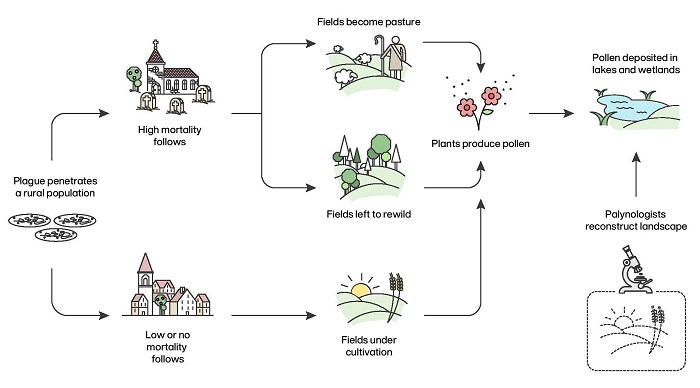
The BDP approach to verifying Black Death mortality levels. Credit: Adam Izdebski, Timothy Newfield, Hans Sell, Michell Oreilly
The international team's research demonstrates that Black Death mortality was far more spatially heterogeneous than previously recognized. It took a devastating toll, while having negligible or no impact in others. A significant decline in cultivation in Scandinavia, France, southwestern Germany, Greece and Central Italy confirms high mortality, as indicated by medieval historical and archaeological sources. Meanwhile, many regions, including most Central and Eastern Europe and parts of Western Europe, including Ireland and the Iberian Peninsula, show evidence of continuity or uninterrupted increase in cultivation.
'Large differences in mortality, which we have confirmed thanks to a pollen data and BDP, require explanation in further studies that will take into account local cultural, environmental, economic and social contexts. A number of local circumstances could have affected the occurrence of plague bacteria, morbidity and mortality', says Dr. Piotr Guzowski from the University of Bialystok.
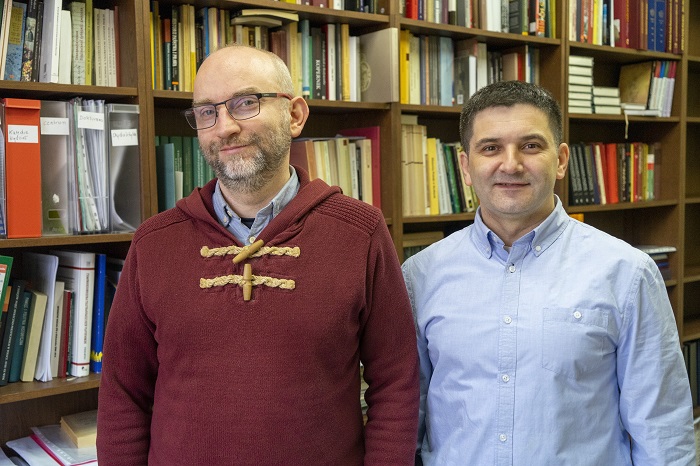
From left: Dr. R. Poniat, Dr. P. Guzowski / Credit: K. Dziedzik, University of Bialystok
The researchers emphasize the unique value the study: many of the historical sources used in studies of Black Death relate to urban contexts characterized by a higher written culture and the development of bureaucracy, buy also crowding and generally poor sanitation. Meanwhile, in the mid-fourteenth century upwards of 75% of the population of every European region was rural. The study shows that in order to reliably determine the scale of human losses in a given region, data from local sources should be used, and not only historical data, but also the archives of nature and BDP as a method to reconstruct changes in the landscape.
'There is no one model of the plague +pandemic+ or +epidemic+, which could be applied to any place and any time, regardless of the context', emphasizes Adam Izdebski from the Max Planck Institute (more about his research - HERE). 'Pandemics are complex phenomena that have regional, local histories. We continue to see it in the case of COVID-19, and now we have shown it in the case of the Black Death'.

Sambor Czerwiński the Adam Mickiewicz University in Poznań. Credit: Adam Mickiewicz University
Variation in Black Death mortality shows that it was a dynamic disease with cultural, ecological, economic, societal and climatic factors that determined its spread and social impact, prevalence and the pandemic’s mortality in any given region The study authors hope that in the future, paleoecological data will be used in a broader context, to understand how different local variables affected each other and shaped the past pandemics - and still affect the current ones.
zan/ kap/
tr. RL













